HOW ARCHITECTURE AND FARMING COME TOGETHER
American journalist William H. Whyte once said that if you want to seed a place with activity, put out food. Food attracts people who attract more people.
Urban agriculture can be understood as the practice of cultivating, processing, and distributing food in a metropolitan area. It typically conveys images of exterior spaces, perhaps a backyard or community garden. These spaces, for the most part, reside outdoors.
Urban architecture arguably plays a role in the life of a foodie. Most eateries are ultimately designed to redefine the dining experience. However, an architect's ties to the food industry are much more profound, and designers are starting to reinvent the way we regard and manage food production.
As human beings, our fundamental spatial needs are similar to those of plants. Natural light, air quality, heat, water, and a pest-free environment are essential to architectural spaces. Bringing the production of produce indoors also relieves the landscape from intensive human intervention.
As these cities develop, we must continue to find distinct and innovative ways to support the populace. Vertical farming and urban agriculture facilitate relief in urban environments. We are helping to reduce the pressure on public food supply while reinventing our traditional approach to food production at the same time.

AGRICULTURE AND THE URBAN ENVIRONMENT
Modern technology has perpetuated the further separation of agriculture and the city, although new thought and experimentation has revealed a symbolic relationship between the two.
Vertical farming and urban farming are modern movements aimed at reducing human impact on the Earth and enable municipalities to become more resistant to environmental collapse by moving farms into urban areas.
Incorporating agronomy into urban regions allows vertical farming and urban agriculture to shape our approach towards urban development. This process helps people become self-sufficient through using urban and architectural design as teaching tools about food. Agriculture and urbanism are no longer intertwined, but instead, their juxtaposition gives rise to the growth of cities.
As Daniel Solomon noted in Global City Blues, “Food and urbanism are both fundamental to the human experience.” There remains a distinction between the act of growing food and urban experience. Through combing the agricultural landscape into the urban environment, community, and collaboration within the public realm can be fostered.
Urban agriculture utilizes urban space. Take New York City, for instance. You will always find a food peddler at the corner of every plaza or set of steps wherever there is life with a cluster of people surrounding him. They could be eating, gossiping, or merely standing around. Vendors are the caterers of a city's outdoor life. They flourish because they service a demand not being met by the regular commercial establishment.
Urban agriculture can likewise act as a universal unifier within the city where community gardens and Slow Food are growing in popularity. The Slow Food Movement is promoted as a separate option to fast food that strives to preserve traditional and regional cuisine. Encouraging farming of plants, seeds, and livestock characteristic of the local ecosystem.
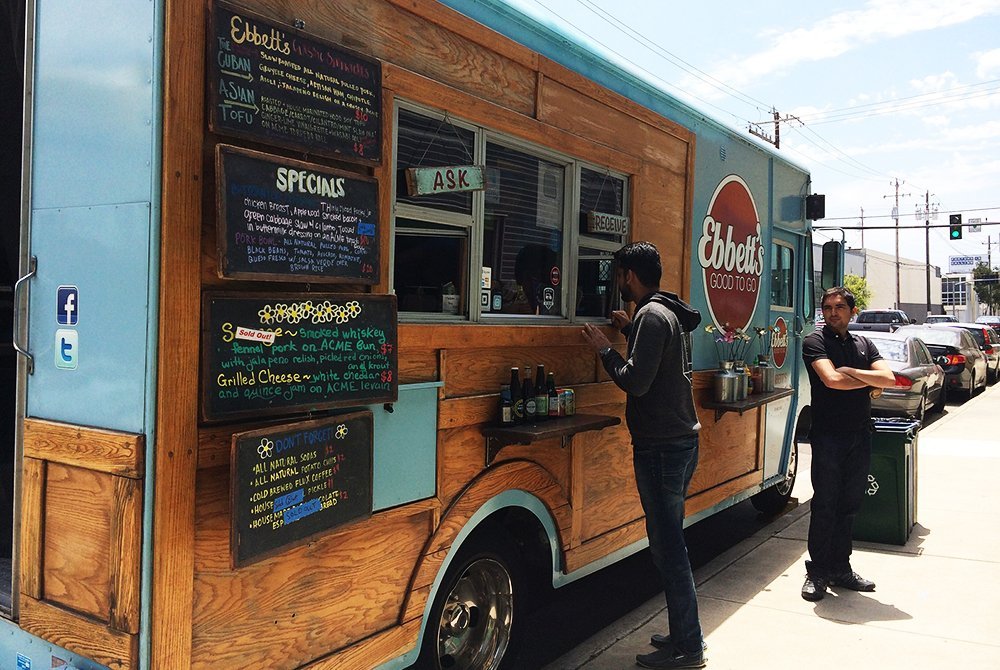 Ebbett's Good to Go food truck that serves sandwiches using organic, sustainable ingredients
Ebbett's Good to Go food truck that serves sandwiches using organic, sustainable ingredients
VERTICAL FARMING IN AGRICULTURE ARCHITECTURE
Vertical Farming refers to agriculture in a dense area that services and provides for a surrounding population. It allows for the production of a variety of crops while eliminating much of the waste and pollution. It advocates for an insular city that produces its resources rather than relying on outside means.
The lack of large-scale built vertical implies that vertical farms have the potential to be defined regarding programs that offer more than just sustenance. The inclusion of these high-tech farms within cities can elevate their growth and amenities while providing valuable resources to its inhabitants.
The human species is expected to face a series of both environmental and economic difficulties resulting from a lack of environmental consciousness. We burn fossil fuels for transportation and harm ecosystems to form fertile land for us to sustain our individual needs. Vertical farming and urban agriculture are viable options that will allow us to work simultaneously with the natural processes of growing food.
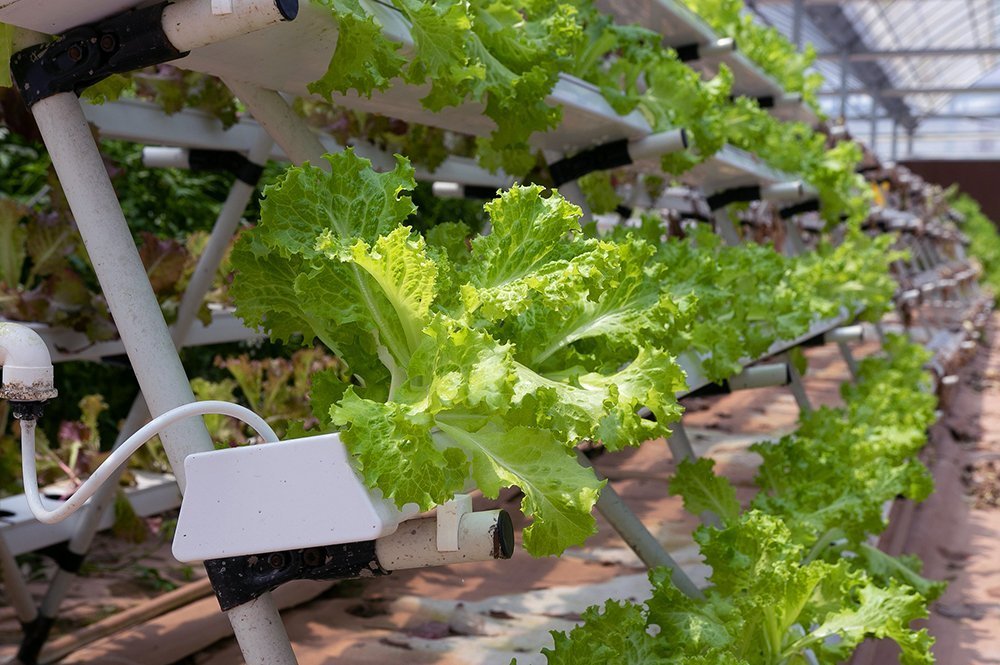 Vegetables grown in an indoor farm
Vegetables grown in an indoor farm
According to Dickson Despommier, emeritus professor of microbiology and Public Health at Columbia University, what we require at this point is not another quick techno-fix but instead, "a permanent overhaul in the way we behave as a species.” And urban agriculture is the perfect answer to this dilemma. With the inclusion of agriculture in the urban environment, urban farming can reshape the public realm and enable people to become more self-reliant.
HISTORY OF URBAN ARCHITECTURE
Urban agriculture may have its roots in recent urban theories and modern precedents, but the conversation dates back to the ancient civilizations. Monuments and cities like the Hanging Gardens of Babylon and Machu Picchu are among the first to combine agriculture with the built form. Machu Picchu consolidated many stepped agricultural terraces in proximity to the urban fabric.
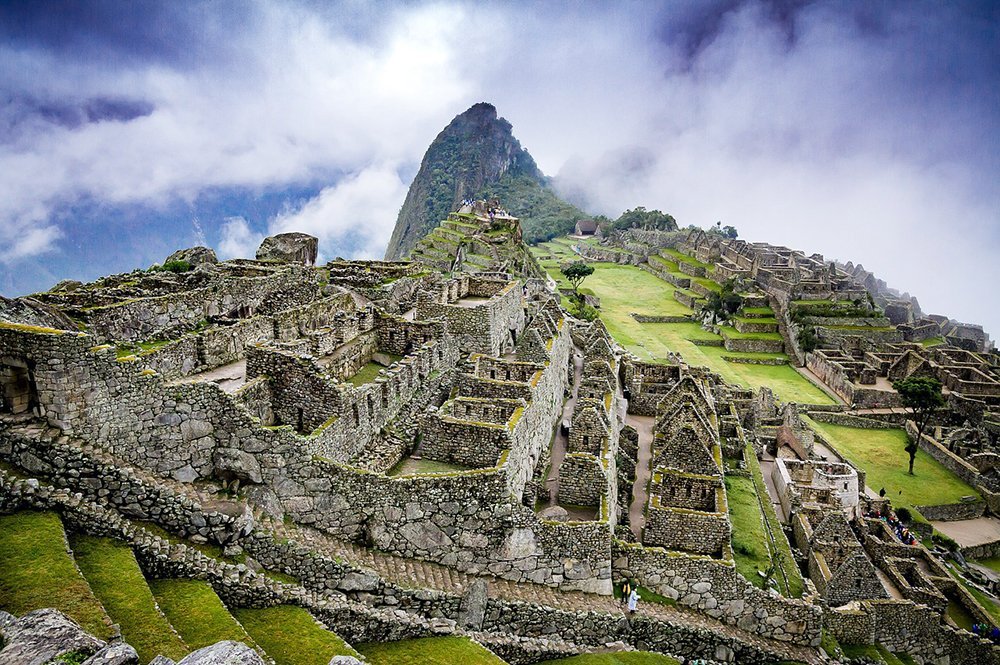 Machu Picchu, located in the Andes Mountains of Peru
Machu Picchu, located in the Andes Mountains of Peru
Meanwhile, the Incans did not distinguish the public space from an agricultural field. The correlation between the proximity of agriculture and the city is undisputed. Situating an agricultural area close to the city walls was crucial to the survival of the Incan population. The need for local food and sustenance became a driver for the creation of this brand of stepped urbanism.
With the industrial revolution, the harmonious relationship between agriculture and the urban environment became severed. Cities established new industries that drew the countryside population to these new occupations. Metropolitan areas quickly became overcrowded, and as a result, architects and urban planners had to envisage what a city should be. Since cities were expanding, agriculture began to be pushed further from the city edge.
A confident British urban planner by the name of Ebenezer Howard reimagined the form of an overcrowded, industrial city. He later articulated his vision for the urban environment in a publication titled Garden Cities of To-morrow.
 New York City Skyline
New York City Skyline
GARDEN CITY MOVEMENT
In 1898, Howard began the Garden City Movement, which bordered on the rise of public space in the form of public gardens. The urban theory was primarily to bring the city to the farm by employing agricultural land as the site for garden cities. Each city was envisioned to have six boulevards with non-productive, public green space being the anchor of the town.
Howard's vision was to integrate large amounts of public spaces into the city to create a healthier environment by allowing light and air into the urban context. While Howard did factor the agricultural aspect into his theory, agriculture was to remain outside of his envisioned Garden City.
In his book, Howard also delineates that five-sixths of the agriculture surrounding the garden city is to be kept intact and functioning to support the metropolis. Dairy farms, fruit farms, and allotment gardens will be incorporated and in proximity to the garden city to promote the city’s health and welfare. While agriculture continues to be an essential function of the garden city, the locus of the theory becomes the relationship between buildings and open space.
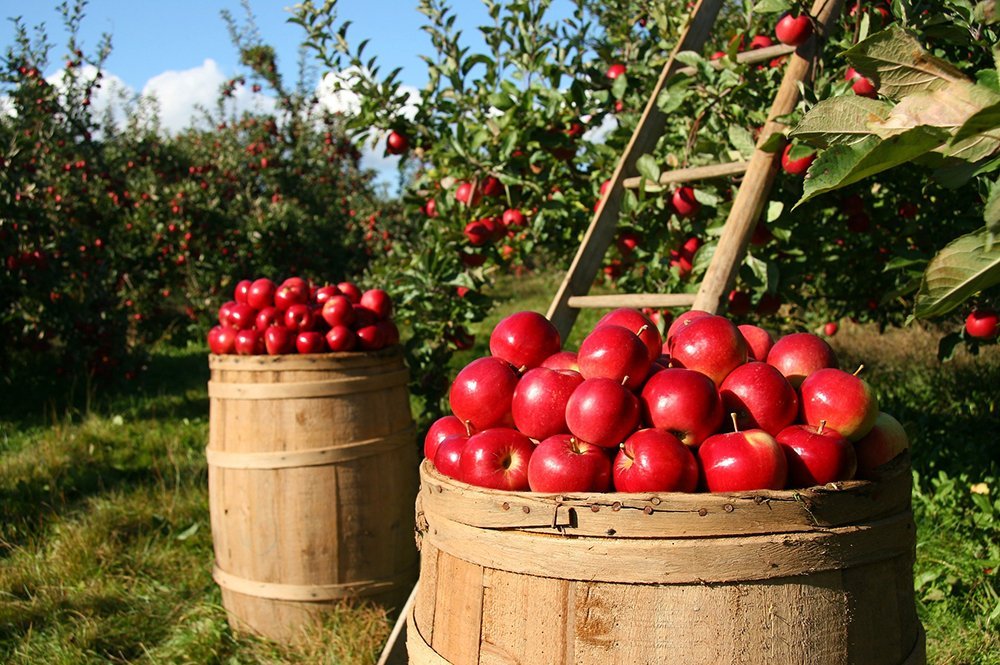 Fruit farm harvest
Fruit farm harvest
BROADACRE CITY
While Howard’s Garden City Movement was focused on public health through public space, American architect Frank Lloyd Wright was sought to reinvent the American suburbs and cities by bringing in agricultural practices. Wright proposed the urban and suburban development concept of Broadacre City in response to the Garden City Movement.
“Whatever a man did would be done – obviously and directly – mostly by himself in his interest under the most valuable inspiration and direction: under training, certainly if necessary.” Based on these words, Broadacre City shifts the population away from an unhealthy, overbuilt city and instead relocates people to the countryside. With one acre per family, Wright’s ideal city focuses on the individual over the collective need.
Consequently, each acre is cultivated and managed by the family residing on the land that participates in both manual and industrial practices. In addition to the family plots, several amenities are planned for Broadacre City. They include factories, schools, markets, and office buildings. All of which will support the inhabitants.
The fundamental focus of each Broadacre community is on the farm. By placing the farm as the highlight of the scheme, Wright places significant emphasis on the importance of the city’s food supply. In his plan, “architecture becomes landscape and landscape takes on the character of architecture by the simple process of cultivation.” Broadacre City hence suggests the massive integration of agriculture into the daily lives of American citizens. The concept also favors a low density, suburban model over a high-density, urban model.
Unfortunately, Wright’s principle of integrating agriculture into the daily lives of people never came to fruition. As a result, our cities have continued to distance themselves from the farm.

MODERN AGRICULTURE
There lies a high degree of separation between agriculture and the population in the present era. We have taken great strides away from our ancient precedents with the aid of technology. People can now indulge in cuisines that originate from thousands of miles away.
Industrialization, zoning regulations, and suburban sprawl has driven agriculture further away from the city limits. We have consequentially lost an aspect of life that was once deeply rooted in our culture.
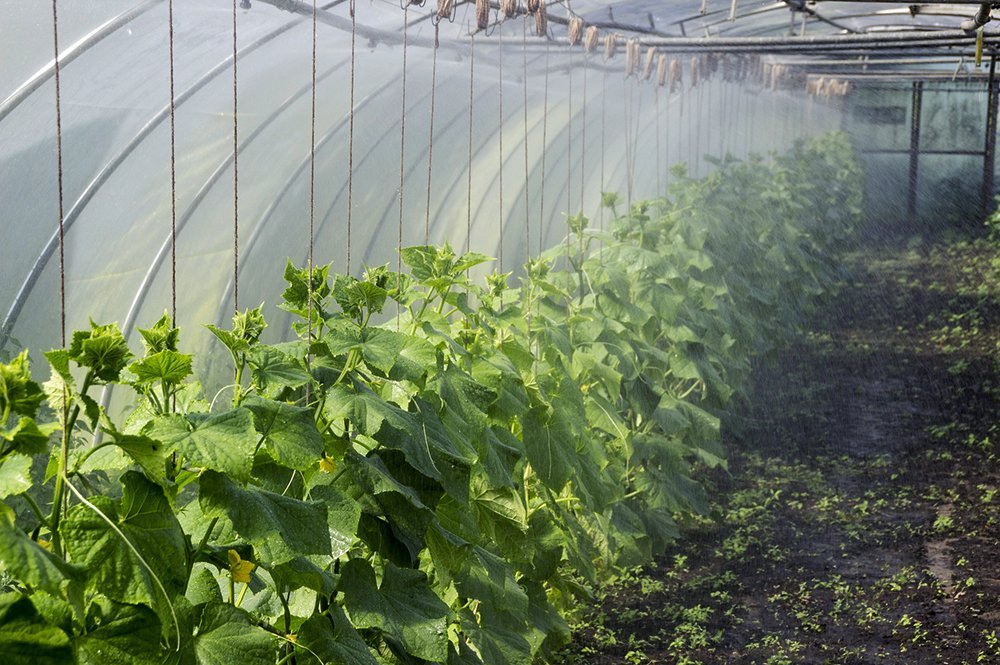 Plants housed in a greenhouse farm
Plants housed in a greenhouse farm
RECONSIDERING AGRICULTURE LANDSCAPE ARCHITECTURE
There are two urban agriculture architecture theories inspired by the green movement.
The first is the Continuous Productive Urban Landscapes (CPUL). This vision promotes the integration of agriculture into our public spaces and streets. The theory builds upon Howard’s Garden City Movement by programming the green boulevards and gardens of the city. Instead of dividing the functions of the city and farm, the two will be assimilated to provide the city residents with healthy food. In turn, CPULs will begin to assess the environmental impact that the food industry causes.
The second is the Agrarian Urbanism concept theorized by American architect and urban planner Andrés Duany. This idea draws upon the limited stance on urban agriculture and presents it as an afterthought to traditional urbanism. Duany contends that urban farming can be implemented in New Urbanist cities via kit-of-parts architecture. This form of construction involves arranging the different parts and raw material of a building into a range of standard easy-to-manufacture parts, tailored for convenient handling or according to shipping constraints.
The construction of the building occurs on the assembly level as opposed to the raw material level. The architect defines a parts library describing every primary assembly in the building. The constructions are formulated in a systematic manner that is based on specific rules such as increment, size, or shape grammar. Standard, simple connections between the assemblies are carefully defined to ensure that the number of possible shapes and appearance the parts can take is limitless. Meanwhile, farms will remain farms. Balconies and rooftops will be converted to aid agriculture.
Regardless of the degree of implementation, both theories are concerned with integrating the productive landscape into the urban context. Agrarianism and urbanism will no longer be seen as mutually exclusive but rather as mutually beneficial by-products.
In bringing the farm into the city, architects are given a unique opportunity to reshape the public space, while providing a local productive amenity. Urban agriculture theory thus supports urban agriculture and can be a productive program that enriches the urban fabric.










